Events Blog
One Book UWinnipeg
Contents:
Kim Thien Cao on Kent Monkman, Shame and Prejudice, Winnipeg Art Gallery
Sophia Hershfield on the 1BUW Panel Discussion
Andrew Brown on the 1BUW Panel Discussion
Alexandra Neufeldt on the 1BUW Panel Discussion
Rhys Delios on Dr. Naomi Hamer, Public Presentation on the PISIM App
Ciara O'Reggio on the 1BUW Symposium
Sabrina Zacharias on David A. Robertson, "Truth, Representation, and Reconciliation in Comics"
Blake Carter on David A. Robertson, "Truth, Representation, and Reconciliation in Comics"
Wencke Rudi on David A. Robertson, "Truth, Representation, and Reconciliation in Comics"
Kell Hagerman on When Raven Became Spider, Gallery 1C03
Sasha Bouché on When Raven Became Spider, Gallery 1C03
Shame and Prejudice by Kent Monkman
Winnipeg Art Gallery Exhibit
Report by Kim Thien Cao for English 4717: Indigenous Comics
October 2, 2019
How to cite this blog post in MLA 8:
Cao, Kim Thien. “Shame and Prejudice by Kent Monkman.” One Book UW, University of Winnipeg, 3 Nov. 2019, www.uwinnipeg.ca/1b19/eventsblog
Overview
Kent Monkman, a Cree artist originally from Winnipeg, responded to ‘Canada 150’ by showcasing Shame and Prejudice: A Story of Resilience at the Winnipeg Art Gallery to challenge colonial points of view. Monkman’s exhibit includes eight chapters that re-center Indigenous stories through their alter ego, Miss Chief Eagle Testickle, a Two-Spirit trickster. The use of chapters in an art exhibit highlights tangible pieces of Miss Chief’s memoirs, reflecting Indigenous resiliency and histories. Ultimately, Monkman takes back stories that have been silenced and asserts Indigenous autonomy and survival.
Artist’s Talk
On September 27, 2019 Monkman discussed his artistic process, the nostalgia of frequenting the WAG in his younger days, and his goal to create/rewrite shared histories and how they are displayed in the gallery. In his closing remarks, Monkman talked about Winnipeg’s north end as a place of inspiration, describing it as “textured […] grittiness”.
A video of Monkman explaining his exhibit can be found here along with his installations.
Exhibit Observations & Reflection
A few highlighted chapters from Monkman’s exhibit, personal observations and a reflection can be found below.
Chapter 2 Fathers of Confederation
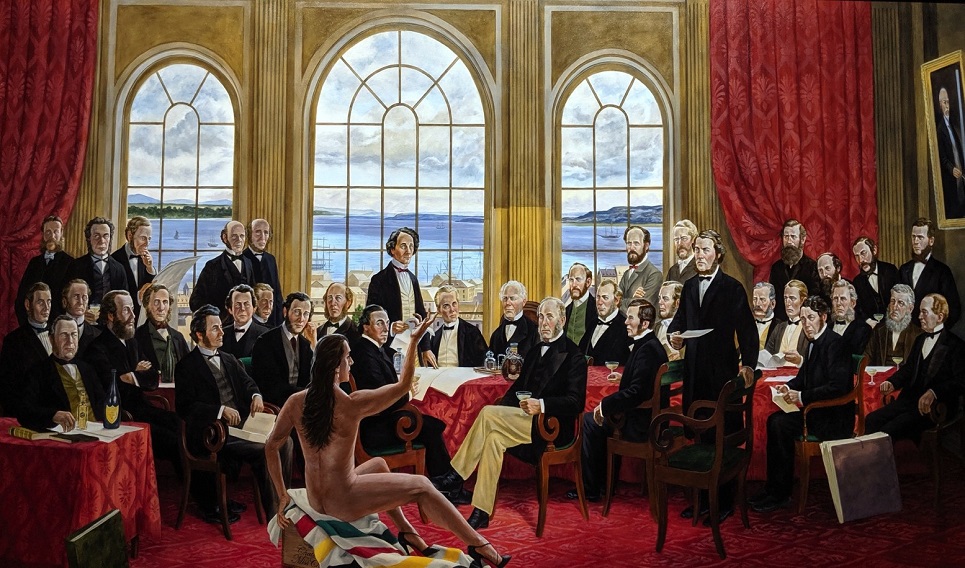
“Men are so simple, blinded by greed, they see only that from which they think they can profit” (Monkman, Kent. Shame and Prejudice: A Story of Resilience, 27 Sept. 2019-Feb 2020, Winnipeg Art Gallery, Winnipeg.)
Observations:
- Miss Chief Eagle Testickle challenges the white gaze by literally sitting on the HBC blanket (a $ymbol of colonization/commodity) with their bare buttocks and commands the room while John A. MacDonald is in the background. By inserting their queer Indigenous presence, Miss Chief acts as a trickster, causing mischief and trivializing official portraiture of the ‘Fathers of Confederation’.
Chapter 5 Forcible Transfer of Children

“This is the one I cannot talk about. The pain is too deep. We were never the same” (Monkman, Kent. Shame and Prejudice: A Story of Resilience, 27 Sept. 2019-Feb 2020, Winnipeg Art Gallery, Winnipeg.)
Observations:
- Named after The Scream by Edvard Munch, the painting shows the blatant violence Indigenous families and children faced during their removal. Scream answers Stephen Harper (and many like him) who believe that ‘Canada’ did not have a colonial history (0:00:40-0:01:17). Thus, the painting rectifies historical/ongoing colonial harms that can no longer be denied.
Chapter 8 Sickness and Healing
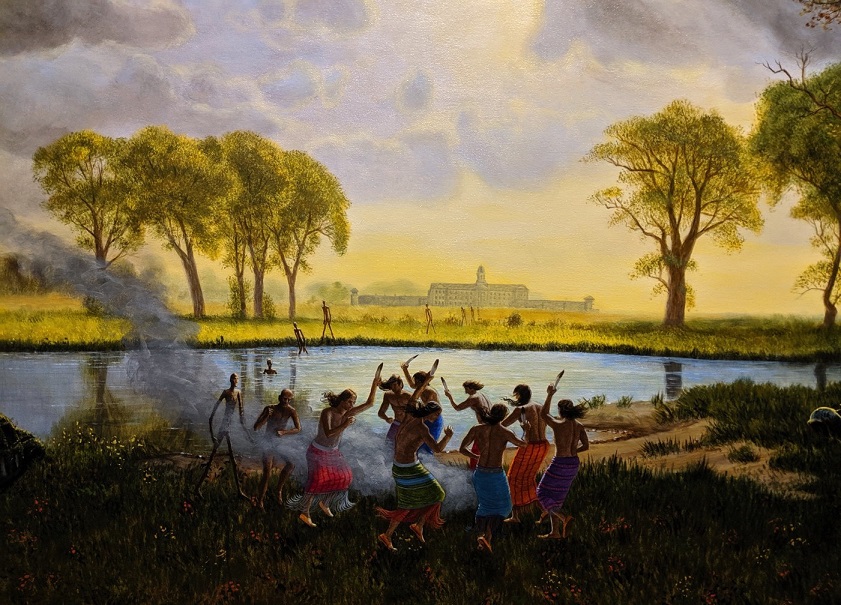
“I visit my people to bring them the solace of our spirituality, that they may rise up out of this cycle of destruction, learn the language of their souls and be free once more”(Monkman, Kent. Shame and Prejudice: A Story of Resilience, 27 Sept. 2019-Feb 2020, Winnipeg Art Gallery, Winnipeg.)
Observations:
- Monkman addresses lateral violence and the over-representation of Indigenous peoples in . Reincarceration speaks to the resurgence of ceremonies and dance (as seen in the painting) that have oppressed Indigenous In essence, Monkman emphasizes Indigenous resiliency by means of reclaiming their identities, languages and spirit as a means of healing.
Questions & Reflections
Monkman admits that the WAG is a colonial space. He works to decentre dominant conversations but, I wonder, who is this exhibit for? Before the artist’s talk, the WAG’s Inuit Art Centre video targeted future attendees/donors with their new initiative by showcasing the ‘diversity’ of peoples coming to the gallery and how it ‘connects us’. The contradictions between the video and what was reflected in the audience leaves me to ponder, is Monkman’s critical message getting out to the public like KC Adams work with Perceptions? Do I settle to stand behind bourgeois white folks at the Monkman exhibit reading Duncan Campbell Scott’s statement, “I want to get rid of the Indian problem” and listen to their quiet gasp of ‘wow’, a response one would say that is centuries too late? Retrospectively, it is easier to be cynical rather than hopeful; I want to choose the latter. As Mihesuah and Cavender argue, colonial “institution[s] are [being] shaken; to compel […] responsiveness to Indigenous issues” (qtd. in Callison et al. 48) and when artists like Monkman make use of white spaces to create tension between de/colonial narratives, is it so wrong to cling onto hope?
Works Cited
Adams, KC. “Perceptions.” YouTube, YouTube, 25 Mar. 2015, https://www.youtube.com/watch?v=N1LIZPs8Spw.
“BIOGRAPHY.” Kent Monkman, https://www.kentmonkman.com/biography?rq=shame and prejudice.
Callison, Camille, et al. “Making Use of the White Space: The Mazinbiige Indigenous Graphic Novel Collection at the University of Maniotba.” p. 48.
Chartrand, Vicki. “Broken System: Why Is a Quarter of Canada's Prison Population Indigenous?” The Conversation, 12 June 2019, http://theconversation.com/broken-system-why-is-a-quarter-of-canadas-prison-population-indigenous-91562.
Docs, CBC. “Colonization Road: The Path of Reconciliation Is Long and Winding.” YouTube, YouTube, 24 Nov. 2017, https://www.youtube.com/watch?v=u03qLJ50bf4.
“INSTALLATION.” Kent Monkman, https://www.kentmonkman.com/installation.
Lizard, Visual. “Current: Winnipeg Art Gallery.” Current | Winnipeg Art Gallery, https://www.wag.ca/art/exhibitions/current-exhibitions/ display,exhibition/236/kent-monkman-shame-and-prejudice
“Meaning of The Scream (1893) Painting by Edvard Munch: Art Analysis.” LEGOMENON, https://legomenon.com/meaning-of-the-scream- 1893-painting-by-edvard-munch.html.
Monkman, Kent. “Shame and Prejudice.” 27 Sept. 2019. Winnipeg Art Gallery. Lecture.
University of Toronto. “Shame and Prejudice: Artist Kent Monkman's Story of Resilience.” YouTube, YouTube, 7 Feb. 2017, https://www.youtube.com/watch?v=SxQ4c7mIuOM&feature=youtu.be
The 1BUW Panel Discussion
October 23, 2019, University of Winnipeg
Report by Sophia Hershfield, BA in English
How to cite this blog post in MLA 8:Hershfield, Sophia. “The 1BUW Panel Discussion.” One Book UW, University of Winnipeg, 3 Nov. 2019, www.uwinnipeg.ca/1b19/eventsblog
Overview
On October 23rd, One Book UWinnipeg hosted a panel called “Redrawing the Past, Reimagining the Future: Indigenous Comics Today.” The panel featured Jennifer Storm, the 1BUW Writer in Residence, as well as Alice RL, Chelsea Vowel, and Scott B. Henderson. The panel was moderated by Dr. Julie Pelletier, a professor of Anthropology at the University of Winnipeg.
The panel began with some reflection from each of the speakers on the significance of This Place: 150 Years Retold for both creators and for readers. Jen Storm, the author of the chapter “Red Clouds,” explained that she wished to tell a Wendigo story and provide a woman’s perspective on a history that is often told from a male perspective. Scott B. Henderson discussed his role as a non-Indigenous illustrator working on This Place. Chelsea Vowel discussed Indigenous futurism, and how these stories are not just about Indigenous futures, but also Indigenous past and present, and are by nature subversive texts. Vowel talked about her chapter in This Place, “kitsakînaw 2350,” which takes place in the future. She explained that she wanted to explicitly work against post-apocalyptic narratives, as she pointed out that Indigenous people are already a post-apocalyptic people, and apocalypse anxiety is an anxiety of settler readers rather than Indigenous readers. Alice RL spoke about their experience reading This Place. They explained that they felt hesitant after looking at the ratio of Indigenous to non-Indigenous collaborators on the text. Alice discussed how easily Indigenous stories get whitewashed and used the example of a videogame which featured a Wendigo story without any Indigenous characters.
The panel opened up to some general questions from the audience. The questions that sparked my interest the most were about the commercial success of Indigenous comics, as well as whether or not comics can be subversive when they are taught in colonial institutions like universities. The discussion brought up the complexities of the ways in which we are trapped in a colonial and capitalist society. It is unfortunate that the works of Indigenous artists and writers cannot be completely separated from questions about their commercial success, or the fact that the institutions that are studying these works are colonial in their existence. Although the panelists admitted that being a comics artist is not the most profitable area of work, they still found great meaning in telling Indigenous stories.
Although studying Indigenous comics in classrooms won’t decolonize universities overnight, many of the panelists discussed the impact of having access to Indigenous stories from Indigenous creators for readers. One audience member asked whether comic books about Indigenous stories provide representation or simply trivializations, and all the panelists seemed to agree that seeing Indigenous characters, traditions, and symbols being told by Indigenous storytellers has a massive impact on young Indigenous readers. Although commercial value is easier to calculate, the value that these stories provide to readers is immeasurably powerful.
The 1BUW Panel Discussion
October 23, 2019, University of Winnipeg
Report by Andrew Brown, BA in English
How to cite this blog post in MLA 8:Brown, Andrew. “The 1BUW Panel Discussion.” One Book UW, University of Winnipeg, 3 Nov. 2019, www.uwinnipeg.ca/1b19/eventsblog
“Decolonizing the Artistic Process at the 1BUW Panel”
On Wednesday, October 23rd, One Book UW held an Indigenous Comics Panel, entitled “Redrawing the Past, Reimagining the Future: Indigenous Comics Today,” at the University of Winnipeg Library. The panel was moderated by Dr. Julie Pelletier, and featured Jen Storm, Chelsea Vowel, Scott B. Henderson, and Alice RL. Storm, Vowel, and Henderson shared their experiences working on This Place. Alice RL provided her thoughts on the anthology from an Indigenous artist’s perspective.
Scott B. Henderson is a non-Indigenous comics illustrator who worked on the stories “Annie of Red River” and “Like a Razor Slash.” During the panel, he shared his artistic process when working on a project like This Place:
- First, the author and Henderson discuss the overall story. Henderson starts researching, which includes identifying settings, characters, and wardrobe. With this, he creates thumbnails, and sends them to the author for feedback.
- Next, the author gives Henderson the script that lists what to draw in every panel, including captions, speech bubbles, and action. This is when Henderson uses pencil to sketch the panels. He then shares his work with the author, editors, and historians for feedback. They are thorough since they need the representations to be culturally and historically correct. For example, in an early draft of “Annie of Red River,” Henderson sketched Annie’s house according to a photo. A historian shared that this photo was not contemporary to the story, and the house was smaller at the time of the story’s events.
- Once approved, Henderson inks over his sketches by hand, and sends the sketches to the colourist. After this is done, he finishes the comic by lettering all the speech bubbles and captions. Finally, the comic is sent to the publisher.
Later in the evening, Chelsea Vowel, the author of the chapter “Kitaskînaw 2350,” discussed what decolonization looks like. She explained that This Place has moments of decolonization, such as cultural allusions that only Indigenous readers can recognize. For example, certain Indigenous communities (she cited the Cree) can recognize her time machine in “Kitaskînaw 2350” as a shaking tent. These things are by Indigenous people, for Indigenous people.
After reflecting later about the panel, I had a question about Henderson’s artistic process. As a non-Indigenous artist working with Indigenous people during the writing and revising process, has anyone placed Indigenous cultural symbols to decolonize his work without Henderson knowing?
Vowel’s discussion about decolonization answers my question - non-Indigenous readers are not supposed to know the answer. It is as if Vowel released a trickster character, who is playing with Henderson and non-Indigenous readers in This Place. Indigenous authors, editors, and historians may have inserted cultural symbols into Henderson’s work without him understanding their significance. Ironically, there may not be any symbols, but the trick is that there is a possibility.
This extends to other non-Indigenous artists and editors of This Place. There could be cultural allusions throughout their chapters, and they may not recognize or understand them. In a sense, Vowel decolonized the entire anthology with this possibility, making these moments by Indigenous people, for Indigenous people.
The 1BUW Panel Discussion
October 23, 2019, University of Winnipeg
Report by Alexandra Neufeldt, BA in English
How to cite this blog post in MLA 8:Neufeldt, Alexandra. “The 1BUW Panel Discussion.” One Book UW, University of Winnipeg, 3 Nov. 2019, www.uwinnipeg.ca/1b19/eventsblog.
On October 23rd, 2019, the One Book UW program hosted a panel with some of the contributors to This Place: 150 Years Retold. Jennifer Storm, Scott B. Henderson, Alice RL, and Chelsea Vowel were all part of the panel. While the panelists were asked a wide variety of questions, perhaps the most prevalent theme of the evening was about the ethics of different types of Indigenous representation, including the representation of Indigenous characters, spiritual figures, and important cultural items, as well as decolonial futures and representation in the production of This Place.
Storm, RL, and Vowel all spoke about some of their guiding principles in representing Indigeneity in their creative works. In reflecting on “Red Clouds,” Storm talked about the need to represent the stories that have been erased in the historical record, such as those of the women not talked about in Thomas Fiddler and James R. Stevens’ Killing the Shaman and the difficulties in retelling a story that was never told. She said that her research could fill in things like the common symbol of the cooking pot used in other windigo stories, and she used a combination of her research findings and fictionalized versions of real people to create the story.
RL emphasized the importance of Indigenous artists and writers telling Indigenous stories and expressed disappointment at how many non-Indigenous creators were involved in This Place. RL’s analysis of three of the chapters in This Place and how their art style and story did or did not compliment each other was also a key insight and critique that was made meaningful by their position as a comics artist. They also stressed the importance of critically thinking about how Indigenous people are represented in comics, and the tendency towards whitewashing and oversexualization of female characters.
Vowel spoke in depth about Indigenous futurism (a term coined by Grace Dillon) and its meaning for her. For Vowel, Indigenous futurism is a response that Indigenous people “will not be annihilated” in the face of apocalypses past and future. In contrast to settler narratives about the apocalypse revealing greatness in the individual, Indigenous futurism can imagine a better future for the community, a future that includes working towards decolonization (even if it can never be totally achieved and is based on Indigenous truths and does not operate as a fiction. It must be written (or drawn, filmed, sculpted, etc.) by an Indigenous person.
Vowel and Storm both discussed the inclusion of Indigenous beliefs and practices in a book that a lot of non-Indigenous people were likely to read, and both stressed the ability of these inclusions to help Indigenous readers to see themselves and to reflect differences in beliefs and identities between nations.
Public Presentation on the PISIM App by Dr. Naomi Hamer, Ryerson University
October 24, 2019
The Centre for Research in Young People’s Texts and Cultures
The University of Winnipeg
Report by Rhys Delios, BA in English
Oct. 31, 2019
Delios, Rhys. “Public Presentation on the PISIM App by Dr. Naomi Hamer.” One Book UW, University of Winnipeg, 3 Nov. 2019, www.uwinnipeg.ca/1b19/eventsblog
Overview
Dr. Naomi Hamer, an Assistant Professor at Ryerson University and the President of the Association for Research in Cultures of Young People (ARCYP), is a researcher with the Six Seasons of the Asiniskow Ithiniwak: Reclamation, Regeneration, and Reconciliation. Dr. Hamer’s presentation focused on the adaptation of the picture book Pisim Finds Her Miskanaw into an app (Fig. 1), the constraints and challenges of the process, and how the form opens up new avenues of accessibility to users. Dr. Hamer also discussed the collaborative process of creating the app that includes“Knowledge Keepers and Elders of the Asiniskow Ithiniwak (Rocky Cree) communities of northern Manitoba” and researchers from academic institutions, museums, and other research and education organizations.
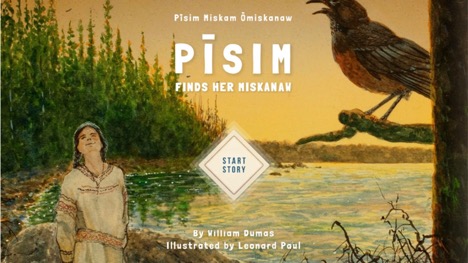
Presentation on Pisim
Dr. Hamer focused on the advantages and downfalls of adapting Pisim into an app. While the form makes the text more accessible, includes English and Cree translations, and streamlines the historical notes of the book into informational pop-ups (Fig. 2), the production of the app is expensive and might not be accessible for users with audio/visual disabilities.
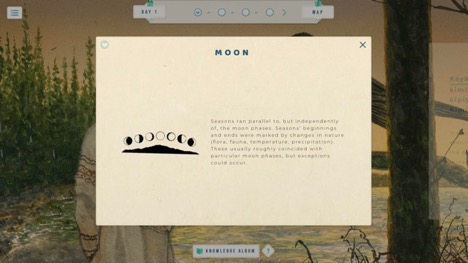
Dr. Hamer discussed whether or not the app restricts the educational aspects of the text further than the book, since it limits engagement with the text to a small screen and is arguably harder to navigate. While users can flip to any page in the book with ease, the app forces users to choose one of three days in the text and then move to one of the events/pages that occurs on that day. However, the app allows the world of Pisim to grow much farther than the picture book. It allows for the inclusion of soundscapes, using animals indigenous to northern Manitoba, narration spoken by Elders fluent in Cree, and in the future could enable queer and two-spirit representation. Dr. Hamer also drew connections between the collaborative process of creating Pisim and the collaborative creation of This Place: 150 Years Retold.
Observations and Discussion
While the Pisim app adapts a picture book and not a comic, I wonder if Indigenous comics could be adapted into apps as well? Pisim asks the user to move through stills of events that were initially individual pages in the picture book. Certainly, this sequential narrative reflects that of comics, moving from event to event in a similar way to how one moves from panel to panel in a comic. While the number of story and informational pop-ups on each page makes the user's movement through Pisim very slow, I wonder if an app of a comic would move much faster, or if adapting Indigenous comics would allow for the same inclusion of pop-ups and narration that enable the user to move through the narrative slowly?
In her paper “ComiXology and the Future of the Digital Comic Book,” Hannah Johnston points to the comic book app ComiXology as an example of how the adaptation of comics into digital media presents unique challenges and new opportunities for innovation in comics. Johnston points out the app’s Guided View feature, which intends to “facilitate readability” by showing single panels on screen at a time, rather than showing full one or two page spreads. Johnston suggests that this creates a false sense of suspense, since, when reading a print comic book, “the reader is aware (at least vaguely) of the content of all panels in the two-page spread open at a given moment.” However, Johnston points out that the digital format opens up more creative opportunities than the print form might: “Use of intentional suspense is one possibility. Motion comics – which combine animation and sound with traditional illustration – are an exemplary form exploring the potential of digital tools.” For example, if This Place: 150 Years Retold were to be adapted into an app, the collaborators working on the project could include pop-ups of historical explanations, or create soundscapes that immerse the user into the various narratives and worlds, much like in Pisim. The theoretical This Place: 150 Years Retold app could be similar to Pisim if each chapter in the book was treated like the days in Pisim, with each comic being in its own section of the navigation.
Works Cited
Dumas, William. Pisim. Version 1.2, Tactica Interactive, 6 Nov. 2019. Apple App Store, https://apps.apple.com/us/app/pisim/id1321604490.
Hamer, Naomi. 24 Oct. 2019. The University of Winnipeg. Lecture.
Johnston, Hannah. “ComiXology and the Future of the Digital Comic Book”. The IJournal: Graduate Student Journal of the Faculty of Information, Vol. 2, no. 2, Mar. 2017, https://theijournal.ca/index.php/ijournal/article/view/28126.
OwnVoices and Critical Engagement With Indigenous Comics: Report on the One Book UWinnipeg Symposium
Ciarra O'Reggio, BA in English
29 November 2019
How to cite this blog post in MLA 8:
O’Reggio, Ciarra. “OwnVoices and Critical Engagement With Indigenous Comics.” One Book UW, University of Winnipeg, 29 Nov. 2019, www.uwinnipeg.ca/1b19/eventsblog
The morning of the One Book UWinnipeg Student Symposium began with a prayer from Elder Calvin Pompana, followed by student presentations and a panel discussion titled “Reading Indigenous Comics & Graphic Novels,” moderated by Dr. Lorena Fontaine. The students' discussions covered books such as 500 Years of Resistance by Gord Hill, SixKiller by Lee Francis IV, Will I See by Erin Leslie, as well as David A. Robertson and Scott B. Henderson's 7 Generations: A Plains Cree Saga. Overall, the discussions were inciteful, but Wencke Rudi's presentation brought up an interesting point about the role of the critic. Rudi's presentation, "Endured in the Gutter: A Reading of Violence in Indigenous Comics," discussed how comics like 500 Years of Resistance and Red: A Haida Manga by Michael Nicoll Yahgulanaas seem to minimise the experiences of Indigenous women in their adaptations of history and traditional stories. Rudi asserted that although both of these books have positive Indigenous representations, there is room to celebrate and critique works of art at the same time. Criticism keeps artwork alive, and it is important to analyse and find faults in work, even if they have progressive political agendas.
But who should be doing the majority of this scholarship? Who should be leading the majority of conversations about Indigenous issues in art? This question connects to the #ownvoices movement, a hashtag coined by Corinne Duyvis to describe artwork that is made about marginalised groups by an author who is from the same marginalised group. This hashtag was created in response to non-marginalised authors writing (often inauthentic and offensive) depictions of marginalised people. In his keynote presentation, David A. Robertson described how, throughout much of his early childhood, he was surrounded by comics that were not ‘own voices,’ and they caused him to form negative perceptions of himself and his Indigeneity. As a grown man, he strives to offer Indigenous people (and especially children) "stories of truth," stories that come from a place of lived experience.
In response to a question about the role non-Indigenous artists of Indigenous comics have in the ownvoices movement, Robertson gave a great, complex response. To paraphrase, he said that the collaboration between Indigenous writers and non-Indigenous artists can do great work. Comics making requires extensive research and learning, so it is an opportunity for non-Indigenous artists to grow and become educated about Indigenous communities. In this way, non-Indigenous artists helping Indigenous writers tell their story can be a form of personal growth and allyship. On the other hand, though, Robertson said that he would like to see more Indigenous artists engaging with Indigenous stories, because there are Indigenous artists out there.
The question of who should be illustrating Indigenous comics is more complicated than who should and who should not. Moreso, a balance needs to be struck, a balance that the Indigenous Comics community has not yet reached. In terms of scholarship about Indigenous comics, a similar dynamic is at work. It is important for everyone to engage with Indigenous comics and Indigenous literatures, because engagement and criticism is what keeps art alive. However, in the future, one would hope to see more of this criticism being done by Indigenous scholars. Here, academia has yet to strike a balance.
“Truth, Representation, and Reconciliation in Comics”
1BUW Final Symposium Keynote by David A. Robertson
Sabrina Zacharias, English 4717: Indigenous Comics
November 29, 2019
Zacharias, Sabrina. “Truth, Representation, and Reconciliation in Comics.” One Book UW, University of Winnipeg, 29 Nov. 2019, www.uwinnipeg.ca/1b19/eventsblog
On Friday, November 28, One Book UWinnipeg held their final symposium. An array of topics were covered by the Indigenous Comics and Graphic Novels class in roundtable presentations and discussions. Between roundtables, David A. Robertson, award winning Cree author of When We Were Alone, and “Peggy” of This Place: 150 Years Retold, gave a keynote speech, discussing the importance of truth-telling and representation in comics. Jennefer Nepinak, the Associate Vice-President of Indigenous Engagement at the University of Winnipeg, gave an introduction for Robertson.
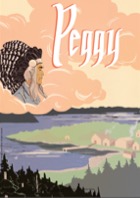
Fig. 1 “Peggy” Title page: From David A. Robertson and Natasha Donovan’s “Peggy”
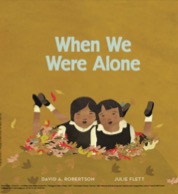
Fig. 2 Cover: From David A. Robertson’s When We Were Alone
Robertson began his keynote with his experience of growing up in a small Manitoban town with very little exposure to other Indigenous peoples to help shape a positive view of his own Indigeneity. Robertson spoke of the negative self-image that he developed because of the bullying he experienced for the way he looked. He continued by discussing the effects of representations of Indigenous peoples in popular culture on marginalized identities.
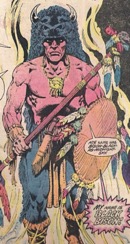
Fig. 3 Black Bison: Gerry Conway’s Firestorm Volume 2, #1
Giving the example of Black Bison, the antagonist of the first edition of DC comic book Firestorm, Robertson discussed how there is an “underrepresentation” of Indigenous characters, not just in comics, but throughout popular culture. Robertson went further to point out that, even when there have been Indigenous characters present, they have been grossly “misrepresented.” The Cree author spoke to his own experience of growing up in the 1980s, when depictions of heavily racialized characters such as Black Bison would be the typical form of representation for Indigenous readers. Such ideas and images only further fosters negative self-image. Robertson said of such depictions, “these are relics, not our cultures.”
As Robertson’s talk progressed past his primary years and into adulthood, he underscored the importance of representation as he spoke about his own goals to ensure the people he reaches with his work are receiving truthful representations that Indigenous people can see themselves in. Robertson closed his talk by impressing upon his audience how essential it is to amplify voices of truth-telling Indigenous creators by supporting their work, and encouraging emerging Indigenous artists to share their work. Identities are formed by the people you are surrounded by, the media you consume, and the understandings we have for each other, which is why it is so important for the representation of Indigenous peoples to have their cultures represented not as racialized relics.
Works Cited
Conway, Gerry et al. “Black Bison” DC Database, Firestorm Volume 2, DC: 1982. https://dc.fandom.com/wiki/Black-Cloud-In-Morning_%28New_Earth%29
Robertson, David A. and Natasha Donovan. “Peggy.” This Place: 150 Years Retold, Highwater Press, 2019. Print. 82-108.
Robertson, David A. When We Were Alone, Portage & Main Press, 2017. ProQuest Ebook Central, https://ebookcentral.proquest.com/lib/uwinnipeg/detail.action?docID=4832387.
1BUW Final Symposium Keynote by David Alexander Robertson
By Blake Carter, BA in English
December 6, 2019
How to cite this blog post in MLA 8:Carter, Blake. “1BUW Final Symposium Keynote by David Alexander Robertson.” One Book UW, University of Winnipeg, 6 Dec. 2019, www.uwinnipeg.ca/1b19/eventsblog
On November 29, 2019, I attended the keynote speech given by David A. Robertson, an award winning Indigenous writer of “Peggy,” the historical-biographical comic on the life of Francis “Peggy” Pegahmagabow that was included in This Place: 150 Years Retold. The keynote focused on Indigenous representation in popular culture and how storytelling can positively or negatively affect representation.
Robertson began his presentation by explaining his background with comics and his own Indigeneity as a young adult growing up in the small town of Melita, Manitoba. The main idea that Robertson highlighted throughout his retelling was that the formation of identity is contingent on the people around you. As the only “brown-skinned” boy for miles around, Robertson recalled being frequently picked on by other kids because of his race. This type of constant negativity led Robertson to develop a corresponding negative self image, which prompted him to ask his Aunty Joan “am I ugly?” By the time Robertson reached adolescence, he sought to distance himself from his Indigeneity as much as possible, even going so far as to completely deny being Indigenous when asked by a schoolmate.
In addition to the influence of peers and the general public, Robertson also highlighted the influence of pop culture (television shows, movies, comics, etc.) on his self-worth. Robertson identified a general lack of Indigenous characters in pop culture, before stating that when Indigenous characters are represented, it is almost always through negative stereotypes (such as the “Indians” in Back to the Future Part III or Black Bison in the Firestorm comics). Speaking specifically about comics, Robertson identified several traits most frequently wielded by Indigenous characters: the words Chief, Eagle, Raven, Red, or Thunder were common components of names, most characters originated on reserves, and most possessed “Indian Powers” involving spirituality, tracking, or animals in some way. Robertson firmly believes this type of underrepresentation and misrepresentation that is rampant in all forms of pop culture is a recipe for disaster. The overwhelmingly negative representation of Indigenous characters causes great damage to Indigenous kids in the process of forming their own self-image, just as it did to Robertson.
Robertson not only highlighted the problems with pop culture representations of Indigeneity, however: he also stated that storytelling is a way to learn about yourself and those around you, and can help develop a greater sense of self-worth. In his own words, “stories of truth, culture, identity, told in [our] own voice” can create a new reality that is more welcoming to Indigenous peoples. Comics helped create David’s situation, but he strongly believes they can be used more positively and accurately to ensure that this never happens again. By recognizing that character types like the “noble savage” or “dead Indian” are “relics, not our cultures,” artists in every medium have the opportunity to facilitate reconciliation in a more organic fashion that is centred around talking to each other so that the burden of truth can be shared between all.
Event Report on David Alexander Robertson talk, “Truth, Representation, and Reconciliation in Comics”
Wencke Rudi, BA in English
December 6, 2019
How to cite this blog post in MLA 8:Rudi, Wencke. “Event Report on David Alexander Robertson talk, “Truth, Representation, and Reconciliation in Comics.” One Book UW, University of Winnipeg, 6 Dec. 2019, www.uwinnipeg.ca/1b19/eventsblog
The final event for the 1BUW program was held on Friday, November 28th with the symposium of students’ work held throughout the day, and a talk by graphic novelist David Alexander Robertson in between the sessions. Robertson was introduced by Jennefer Nepinak, the Associate Vice-President of Indigenous Engagement at the University of Winnipeg. David Alexander Robertson’s talk, “Truth, Representation, and Reconciliation in Comics,” began with stories of Robertson’s childhood, and hating his own Indigeneity.
Robertson told stories of how negative representations in comic books of Indigenous peoples lead to a negative sense of self. Robertson grew up with his brothers and mother in Melita, Manitoba, and was the darkest child within a community that was not diverse to begin with. Robertson explained how he distanced himself from his Indigeneity, and when asked, “Are you an Indian?”, Robertson denied it. He went on to describe how the boiling point came in the ninth grade, when he was at a party and hid from an Indigenous peer, believing the other student was going to beat him up. From there Robertson began to confront the truth about his negative feelings, beginning with his anger towards his father.
Sharing stories from his childhood, Robertson gave a detailed analysis of how negative portrayals of Indigenous peoples in media led to his distancing of an Indigenious identity. It was through learning more about his father, as well as more stories about Indigenous peoples, that Robertson began to focus on his work in comics. He used the form to get himself and others out of negative perceptions; saying “I need to write stories of truth too” fueled Robertson to create representations of Indigenous peoples within the comic books form that are both truthful and powerful.
These representations that do not rely on past archetypes of Indigenous peoples, but rather present a variety of Indigenous lifestyles and identities, serve to reflect current Indigenous identities and create a positive sense of self. Roberton’s work is especially important for young Indigenous readers in this sense, because it is the next generation that does not have to work to undo damaging narratives, but continue creating positive ones. The talk ended with Robertson speaking about reconciliation, and how representation serves as a beginning point for discussion to happen. These representations serve reconciliation because they foster the sharing of stories and discussions that help to build truth sharing within and across communities.
Robretson’s talk highlighted the importance of representation and its role in creating narratives, both to the individual self and about a larger group of people as a whole. The narratives that contain negative and dishonest representations are damaging, especially to young children who are being influenced by these portrayals. Robertson urges for representations in all forms of media of Indigenous peoples that are varied, truthful, and positive. It is these representations that lead to practical presentations of Indigeneity, something is especially needed in current times of decolonization and reconciliation.
When Raven Became Spider Exhibit
Gallery 1C03, University of Winnipeg
Report by Kell Hagerman, BA in English
How to cite this blog post in MLA 8:Hagerman, Kell. “When Raven Became Spider Exhibit at Gallery 1C03.” One Book UW, University of Winnipeg, 5 Dec. 2019, www.uwinnipeg.ca/1b19/eventsblog
When Raven Became Spider is a touring exhibition that came to the University of Winnipeg’s Gallery 1C03 in Fall 2019. Curated by Leena Minifie, the exhibition centers Indigenous visions of heroism in conversation with superhero comic histories. Featuring creations by six artists that include, digital art, illustration, video, and costuming (among others), the exhibit showcases multiple role models and self-identifications with fantastic and spiritual warriors. On the walls of the gallery, “Pow” and “Wow” are stenciled in bright colours and a comics aesthetic, which alludes to superhero fighters such as Superman or the Hulk. Sonny Assu and Jeffrey Veregge are explicit in this connection, as both artists depict Marvel, DC and Star Wars characters through form line drawing styles.
While each artist has a distinctive approach to “super-heroic beings” and their “possibilit[ies] for self-transformation” (from the curatorial statement), I was most drawn to work by Julianne Beaudin-Herney and Joi T. Arcand. The gallery displays Beaudin-Herney’s original regalia for her superhero, Neckbone Wonder Woman, which the artist wore in a performance entitled “A Historical Confrontation” (seen in Fig. 1). Neckbone Wonder Woman is the artist’s way to “physically illustrate” the story of colonial buffalo killing. The figure represents cultural sovereignty, and the effects of an attempted buffalo “genocide” on traditions including foods: “more specifically… neckbone soup.” The Wonder Woman character is recontextualized through her investment in Indigenous history and a story that foregrounds power and perseverance (questions from Beaudin-Herney’s artist statement).
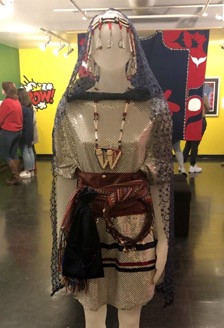
Fig. 1: Neckbone Wonder Woman regalia by Julianne Beaudin-Herney
Neckbone Wonder Woman is a superhero who aids in teaching and remembrance, but she appears as Beaudin-Herney’s alter ego as well, elsewhere in the exhibit. Arcand’s selections include a wall tapestry that depicts “The Beautiful NDN Supermaidens,” a satirical reference to a burlesque poster. Arcand’s “supermaidens” are shown on a backdrop of starry space, a moon at their feet, which tells stories of the future for Indigenous subjects. Culturally meaningful superpowers create these women as heroes, dreamers, warriors and kin in this land and others. Neckbone Wonder Woman appears as one of many superheroes on this wall hanging. Accompanying trading cards visualize the women in black and white photographs with beaded edges and bright backgrounds, beside which the women describe their chosen purposes, skills, and legacies as superheroes with pride and wit.
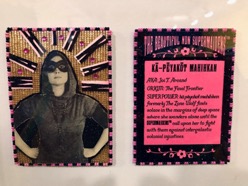
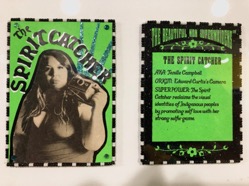
Fig. 2 and 3: The Beautiful NDN Supermaiden Trading Cards by Joi T. Arcand and Jenille Campbell.
Next to Arcand’s collaborative project are illustrated pieces by Shaun Beyale, who takes inspiration from strong Navajo women in his own community. The superheroes he draws take from stories in his culture, and have “parallels” to comic mythologies. These ink-on-paper drawings, with titles including “Power from Within” and “Defending the People,” celebrate stories of support for community. Beyale’s conception of heroism is culturally grounded and finds strength in solidarity.
Beyale, like all the creators in When Raven Became Spider, is inspired by Western influences in comic characters and adventures. However, while Western stories feature the supernatural and great deeds, they fall far from truthful Indigenous experiences (and rare inclusions of Indigenous characters are, with few exception, racist and heavily dependent on stereotypes). Beyale, Assu, Veregge, Beaudin-Herney, Arcand, and video artist Elle-Máijá Tailfeathers each relocate their superheroes, alter their histories for Indigenous circumstances, and create a presence of their own strong cultures within the superhero landscape.
The Appropriation of Superhero Iconography in the Work of Sonny Assu – A Response to Gallery 1C03’s When Raven Became Spider Exhibition
By Sasha Bouché, BA in English
Oct. 31, 2019
How to cite this blog post in MLA 8:Bouché, Sasha. “The Appropriation of Superhero Iconography in the Work of Sonny Assu – A Response to Gallery 1C03’s When Raven Became Spider Exhibition.” One Book UW, University of Winnipeg, 6 Dec. 2019, www.uwinnipeg.ca/1b19/eventsblog
Gallery 1C03’s most recent exhibition, When Raven Became Spider, showcases artwork by Indigenous artists from across Turtle Island that engages with superhero imagery and Indigenous interpretations of super-heroism. The titular series of works by Sonny Assu incorporates Kwakwaka'wakw form-line art into depictions of popular superheroes, namely Spiderman and The Incredible Hulk. In these mixed media works,Raven, a cultural figure known for their role as a trickster, manifests in the dark, undulating lines and ovoid shapes that characterize traditional North-west Coast Indigenous artwork. The shape of Raven’s eyes, beak, and wings constitute the bodies of these highly iconic characters.
Regarding the imagery of these pieces, Assu states “I started thinking about how Raven as a trickster figure is always trying to find some way to make him or her or itself known to the viewer or the public, or to the story, or to the narrative, or to the culture” (Assu 44). Assu incorporates Raven into these works in subtle ways, reflecting common trickster narratives in which Raven is the central figure. However, the Raven imagery overtakes the bodies of these popular superheroes to challenge the long history of commodifying and appropriating Indigenous art and culture.
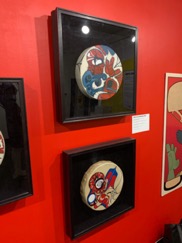
Figure 1: When Raven Became Spider, Issue #1, Vol. #4, 2005. (Top) All New, All Different When Raven Became Spider, Issue #1, 2016. (Bottom)
Superhero comics have a sordid history of using stereotypical or vaguely Indigenous aesthetics to add supposed ‘diversity’ to a superhero team’s roster. There are many examples of characters like this, and most depict Indigenous peoples in ways that contribute to negative understandings of Indigeneity. What is more, Indigenous culture and art is often appropriated by white settlers for profit, and comics and mass media play a huge role in this. Both the negative portrayal of Indigenous peoples and the commodification of their culture puts forth reductive, two-dimensional messages about Indigenous culture and experience. However, Sonny Assu’s work asks the question, what happens if the medium for these negative portrayals becomes the medium for celebrating Indigenous styles of art?
The worldwide popularity of superhero comics suggests that readers share the core values of superheroes, that these narratives speak to people and appeal to their better natures. Values like seeking justice, truth, and acting with compassion and purpose characterize superhero narratives. These values are the foundation for superheroic ethos and they make idols out of these characters. But superheroes are also very profitable, and this commodification aligns super-heroism with capitalist mass media.
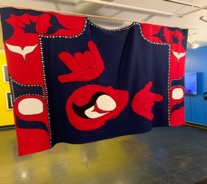
Figure 2: When Raven Became Spider, Embrace, 2003.
Works that appropriate superhero imagery, like Sonny Assu’s, do the reverse. Taking an Indigenous style of art like North-west coast formline and weaving it into the iconic design of Spiderman decentres superhero narratives from a settler-colonial, capitalist understanding.
Creating proximity between these seemingly contrasting styles aligns classic superheroes with Indigenous cultural values and forms of expression. Thus, the core values of classic superheroes, like truth, justice, and compassion expand to encompass Indigenous understandings of these concepts. In this sense, Assu flips the narrative of white settlers exploiting Indigenous aesthetics and art, instead using the highly commodified image of the superhero to celebrate Indigenous culture.
Bibliography
Assu, Sonny. “Sonny Assu.” When Raven Became Spider. Dunlop Art Gallery, 2017.
Goldberg, Matt. “Marvel Studios at the Box Office: How Much Has Each Film Made?” Collider.com, https://collider.com/marvel-movies-box-office/#Guardians%20of%20the%20Galaxy.
Hosein, Lise. “With dreamcatchers and wolves, this artist is calling out the commodification of Indigenous culture.” CBC Arts, https://www.cbc.ca/arts/exhibitionists/with-dreamcatchers-and-wolves-this-artist-is-calling-out-the-commodification-of-indigenous-culture-1.4500634.
Leask, James. “From Shaman to Equinox: The Challenges and Failures of Indigenous Representation in Superhero Comics.” Comics Alliance, https://comicsalliance.com/indigenous-representation-superhero-comics/.
Twitchell, X̱ʼunei Lance. “Northwest Coast Formline Design: the Ovoid.” YouTube, 24 January, 2013. https://www.youtube.com/watch?v=TQ0q240gTYs.
When Raven Became Spider. Gallery 1C03. https://www.uwinnipeg.ca/art-gallery/programming/2019-20/when-raven-became-spider.html.